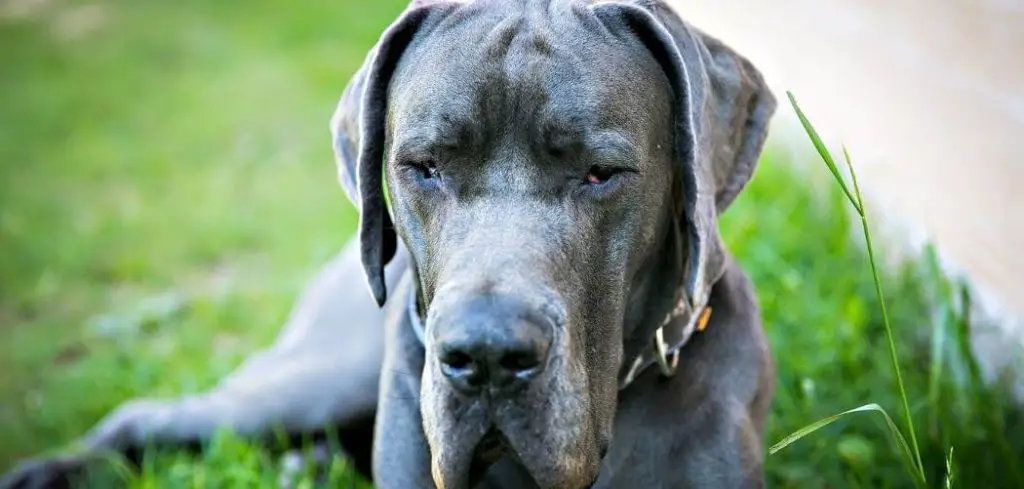When your dog is throwing up bile and refusing to eat, it’s more than just a mess on the floor—it’s a red flag that something may be wrong internally.
We outline the common causes of a dog throwing up bile and not eating, what you can do at home, and when to seek veterinary help.
Dog Throwing Up Bile and Not Eating — Why It Happens
A dog vomiting bile and loss of appetite often points to digestive system irritation, systemic illness, or prolonged fasting.
When a dog vomits bile, it’s usually because their stomach is empty, but other causes include gastritis, pancreatitis, intestinal blockage, or liver disease. This symptom combination is common in dogs with gastrointestinal distress, and when it’s paired with not eating, it raises concern for deeper health issues.

Common Causes of a Dog Throwing Up Bile and Not Eating
Empty Stomach (Bilious Vomiting Syndrome)
One of the most common and less dangerous reasons dogs vomit bile is simply having an empty stomach for too long.
Bile is produced in the liver and flows into the stomach and intestines to aid digestion. If a dog goes many hours without eating, the accumulation of bile can irritate the stomach lining and trigger vomiting.
You might see yellow, foamy vomit, especially in the morning or late at night. The dog may act normal afterward but refuse food temporarily.
While not always serious, repeated episodes require vet evaluation, especially if appetite is affected.
Gastritis (Stomach Lining Inflammation)
Gastritis is a common cause of bile vomiting and appetite loss.
It can occur from eating something toxic, spoiled, or irritating—like garbage, fatty foods, or bones.
Dogs with gastritis often have nausea, drooling, lethargy, and may resist eating due to stomach pain. The vomiting tends to be yellow or greenish bile and may repeat throughout the day.
Without treatment, gastritis can progress and cause dehydration or secondary complications.
Read more: Dog vomiting white foam and not eating (What’s causing it?)
Pancreatitis
Inflammation of the pancreas disrupts digestion and causes vomiting, abdominal pain, and loss of appetite.
Dogs with pancreatitis may vomit bile when their stomach is empty or after attempting to eat. The condition is often triggered by fatty meals or underlying metabolic issues.
Other signs include lethargy, a hunched posture, and diarrhea. Pancreatitis ranges in severity, and some cases become life-threatening without treatment.
Intestinal Obstruction
A partial or complete blockage of the intestines can lead to vomiting bile and refusal to eat.
This often happens if a dog swallows foreign objects like toys, socks, or bones.
Because food can’t move past the obstruction, bile builds up and is vomited. Dogs become progressively more lethargic, nauseated, and uncomfortable.
This is an emergency and requires immediate vet care.
Liver or Gallbladder Disease
When the liver or gallbladder isn’t functioning properly, it can cause a buildup of bile acids and digestive disruption.
These dogs may vomit yellow bile, stop eating, lose weight, and appear weak or jaundiced.
Toxin processing is impaired in liver disease, so even mild symptoms can rapidly worsen.
Routine bloodwork and imaging are usually needed for diagnosis.
Parasites or Infections
Certain intestinal parasites or bacterial infections may also cause bile vomiting and appetite loss.
Roundworms, hookworms, or Giardia can irritate the gastrointestinal tract. Infections like parvovirus (especially in puppies) can cause repeated bile vomiting, diarrhea, and complete food refusal.
Prompt vet treatment is key to prevent severe dehydration and complications.
What to Do If Your Dog Is Throwing Up Bile and Not Eating
If your dog vomits bile once but is otherwise active and alert, monitor them closely and offer small, bland meals after a short fasting period.
Boiled chicken and plain rice are often well-tolerated. Avoid rich, fatty foods that could worsen inflammation.
If your dog refuses food for more than 12–24 hours, or vomits repeatedly, consult your veterinarian. Never give human anti-nausea or stomach medications without guidance.
Encourage hydration with fresh water, or offer low-sodium broth to entice drinking.
You can also try feeding earlier in the day or splitting meals to prevent an empty stomach.
When to Call or Visit Your Vet
Contact your vet immediately if your dog:
Vomits bile multiple times in 24 hours
Has a swollen or painful abdomen
Shows signs of dehydration (sunken eyes, dry gums, lethargy)
Refuses all food and water for more than a day
Displays signs of toxicity (tremors, seizures, drooling)
Early intervention helps prevent severe complications like electrolyte imbalance or organ damage.
Even if symptoms seem mild, repeated bile vomiting with appetite loss should always be evaluated.
Read more: Dog vomiting water and not eating (When to worry and what to do)
Key Takeaway
Bile vomiting combined with not eating is a signal your dog’s digestive system is upset or malfunctioning.
Some cases are mild, like an empty stomach, but others—like pancreatitis or obstruction—can be serious.
Support your dog with gentle care, small meals, and close monitoring, and don’t hesitate to call your vet if the symptoms persist or worsen.
Your dog’s wellbeing depends on early recognition and timely action.
